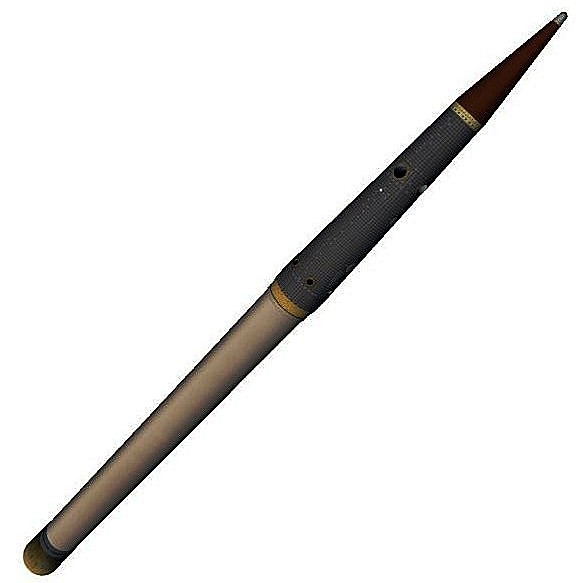By Arthur Dominic J. Villasanta , | May 02, 2017

THAAD interceptor missile.
Sixteen THAAD interceptor missiles are now in a position to shoot down incoming ballistic missiles fired at South Korea by North Korea following these missiles' rapid deployment to a former golf course south of Seoul.
THAAD (Terminal High Altitude Area Defense) system is meant to intercept and destroy short- and medium-range ballistic missiles during the last part of their flights.
Like Us on Facebook
United States Forces Korea (USFK) declared operational two THAAD mobile launchers, each armed with eight "hit-to-kill" interceptors, plus their associated ground equipment that includes the vital AN/TPY-2 radar so powerful it can peer into North Korea, China and Russia when it's switched on.
The battery's interceptors can destroy North Korean ballistic missiles such as the Hwasong-10 (Musudan) intermediate range ballistic missile (IRBM) tested last year and this year, as well. A THAAD battery usually fires a pair of interceptors at each incoming ballistic missile, meaning a battery can shoot down 24 missiles, that is, if all of them find their targets.
Facing the lone THAAD battery in South Korea are over 1,000 North Korean short-range ballistic missiles (SRBMs) with a range of 1,000 km or less. The most numerous threat to THAAD are the SCUD variants, Hwasong-5; Hwasong-6 and Hwasong-7, and the Rodong-1. All these missiles are SRBMs.
Initial intercept capability by the THAAD battery at the Lotte Skyhill Seongju Country Club located atop a hill some 600 meters higher than the surrounding countryside was declared by USFK on April 27, or only five days after work began on re-developing the golf course into a missile base.
USFK said the deployment of the two mobile launchers represents only the first phase in THAAD's deployment to South Korea. Awaiting shipment to South Korea are the remaining four mobile launchers and other necessary equipment.
A THAAD battery consists of six mobile launchers (each with eight interceptors); 48 missiles; two mobile tactical operations centers (TOCs); battle management/command, control, communications and intelligence (BMC3I) units and the AN/TPY-2 X-band ground-based radar.
The X-band radar can detect missiles 2,000 kilometers away on a forward-based mode and 600 kilometers on a terminal mode.
Full operational capability for THAAD is now slated for September, and the sped-up deployment seems to have been accelerated by North Korea's continuing launch of ballistic missiles.
A second THAAD battery is scheduled for deployment later this year or by early 2018.
-
Use of Coronavirus Pandemic Drones Raises Privacy Concerns: Drones Spread Fear, Local Officials Say

-
Coronavirus Hampers The Delivery Of Lockheed Martin F-35 Stealth Fighters For 2020

-
Instagram Speeds Up Plans to Add Account Memorialization Feature Due to COVID-19 Deaths

-
NASA: Perseverance Plans to Bring 'Mars Rock' to Earth in 2031

-
600 Dead And 3,000 In The Hospital as Iranians Believed Drinking High-Concentrations of Alcohol Can Cure The Coronavirus

-
600 Dead And 3,000 In The Hospital as Iranians Believed Drinking High-Concentrations of Alcohol Can Cure The Coronavirus

-
COVID-19: Doctors, Nurses Use Virtual Reality to Learn New Skills in Treating Coronavirus Patients









